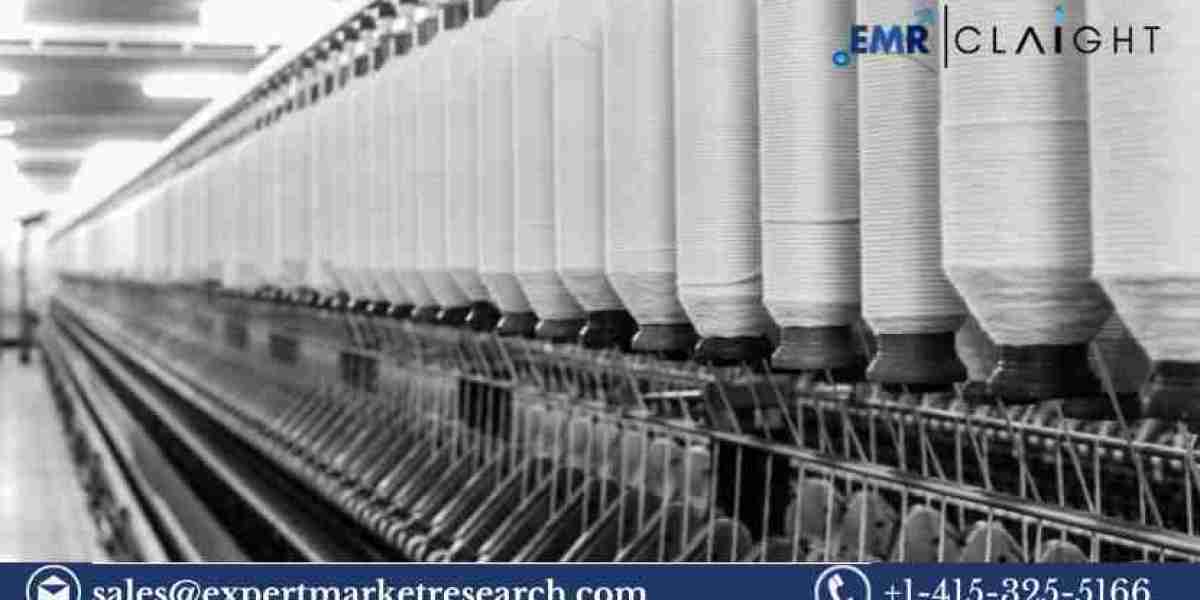The United Kingdom textile market , valued at approximately USD 35.43 billion in 2025, is on a steady growth trajectory. Projected to expand at a CAGR of 2.7% from 2025 to 2033, the market is expected to reach a value of around USD 45.03 billion by 2033. The UK textile industry has experienced significant shifts, from traditional manufacturing to advanced textile technologies, reflecting its adaptability and resilience in the global marketplace. This article delves into the outlook, trends, market share, and challenges of the United Kingdom textile market, providing insights for stakeholders to capitalize on emerging opportunities.
United Kingdom Textile Market Outlook
The outlook for the United Kingdom textile market is promising, driven by several factors including innovation, sustainability, and evolving consumer demands.
The market's growth is bolstered by increased adoption of sustainable practices, the rising demand for eco-friendly materials, and significant advancements in textile manufacturing technologies.
Innovation in Textile Manufacturing : The integration of smart textiles and automation technologies is driving the transformation of the UK textile industry. Companies are increasingly focusing on producing functional textiles, including those with UV protection, moisture-wicking properties, and antimicrobial features.
Sustainability Trends : With growing consumer awareness about environmental issues, the demand for sustainable and recyclable textiles has surged. Many companies in the UK are focusing on sourcing materials responsibly and adopting eco-friendly production methods.
Shift towards High-Value Textiles : The demand for high-quality, sustainable textiles for both fashion and functional uses, such as technical textiles and nonwovens, is expected to grow continuously over the forecast period.
The UK textile industry is positioning itself to capitalize on these trends, ensuring its competitiveness in both domestic and international markets.
United Kingdom Textile Market Share & Trends
The United Kingdom textile market is witnessing a shift in its market share, with key drivers shaping the growth trajectory:
Apparel Segment : The apparel sector remains the largest segment within the textile market, driven by consumer preference for fashion-forward, functional, and eco-conscious clothing. High-end and luxury fashion brands are increasingly relying on UK-based textile manufacturers for quality materials.
Technical Textiles : The demand for technical textiles—such as textiles used in automotive, construction, medical, and industrial applications—is growing. These textiles are designed for specific functionalities like strength, durability, and safety.
Sustainable Fashion : As part of the broader trend towards sustainability, many UK textile firms are shifting towards the use of organic and biodegradable materials. This trend is gaining momentum, with a rising number of consumers prioritizing ethical and sustainable brands.
Imports and Exports : The United Kingdom continues to be an important player in the global textile trade, with significant imports and exports of textiles. While the UK imports a large volume of raw textiles, its exports of finished goods, especially luxury apparel and technical textiles, contribute significantly to market growth.
Get a Free Sample Report with Table of Contents:
https://www.expertmarketresearch.com/reports/united-kingdom-textile-market/requestsample
United Kingdom Textile Market Key Segments
The UK textile market can be broken down into several key segments based on both product and application.
Product Segmentation
Fabrics : The demand for woven, knitted, and nonwoven fabrics is significant, catering to apparel, automotive, medical, and construction industries.
Yarns and Threads : The UK is known for its production of premium yarns and threads, particularly those used in the fashion and home textiles segments.
Home Textiles : This segment includes items such as bedding, curtains, and carpets. With the increasing popularity of home decor, this sector is witnessing growth.
Application Segmentation
Apparel : As one of the largest contributors to the UK textile market, the apparel sector accounts for a significant portion of textile production.
Technical Textiles : This rapidly growing sector includes textiles used in aerospace, automotive, medical devices, and protective clothing.
Home Textiles : Bedding, curtains, and upholstery are growing segments within the broader home textile market.
United Kingdom Textile Market Opportunities and Challenges
Opportunities
Expansion of Sustainable Textiles : The shift towards eco-friendly fabrics and production methods presents an opportunity for companies to gain a competitive edge. Increased consumer interest in sustainable fashion and textiles is driving the demand for greener alternatives.
Technological Innovation : The integration of smart textiles—fabrics embedded with electronic components like sensors or LEDs—is poised to revolutionize various industries. The UK textile market has the potential to lead in this field due to its strong research and development capabilities.
Global Expansion : There is significant opportunity for UK textile companies to expand into emerging markets, particularly in the Asia Pacific region, where demand for textile products is growing rapidly. Expanding exports could enhance the UK's textile market share on the global stage.
Growth in E-commerce : The rise of online retail and direct-to-consumer sales is creating new avenues for textile brands to reach customers without relying solely on traditional brick-and-mortar stores.
Challenges
Labor Costs : The cost of labor in the UK is relatively high compared to other textile manufacturing countries, particularly in Asia. This presents a challenge for UK-based textile manufacturers trying to compete on price.
Import Dependence : The UK textile industry remains heavily dependent on imported raw materials, especially from countries like China and India. Supply chain disruptions, as seen during the COVID-19 pandemic, have highlighted the vulnerability of this model.
Regulatory Pressures : Increasing regulatory pressure to meet sustainability standards and reduce carbon emissions may present challenges for manufacturers, especially small and medium-sized enterprises (SMEs) in the industry.
Global Competition : Competition from low-cost textile-producing countries such as Bangladesh, China, and India poses a significant challenge. UK textile companies need to focus on value-added offerings like premium quality, innovation, and sustainability to maintain competitiveness.
Competitor Analysis
The competitive landscape of the UK textile market is diverse, with both established players and emerging companies vying for market share. Some of the leading companies in the UK textile market include:
Carrington Textiles Limited : A leading supplier of performance fabrics, Carrington manufactures a wide range of textiles used in workwear, uniforms, and hospitality sectors.
British Millerain Co. Ltd. : Known for its expertise in water-resistant and weatherproof fabrics, British Millerain produces high-quality coated and waxed textiles for fashion and outdoor industries.
Rivertex Technical Fabrics Group : Specializes in producing advanced technical textiles for a wide range of applications, including automotive, construction, and medical industries.
Allied Textiles Ltd. : Focuses on woven fabrics and technical textiles, supplying products to industries such as automotive, aerospace, and industrial sectors.
Others : The UK textile market also includes various smaller but significant players contributing to innovations in fabric production, sustainability, and niche markets.
View more Blogs and Reports



